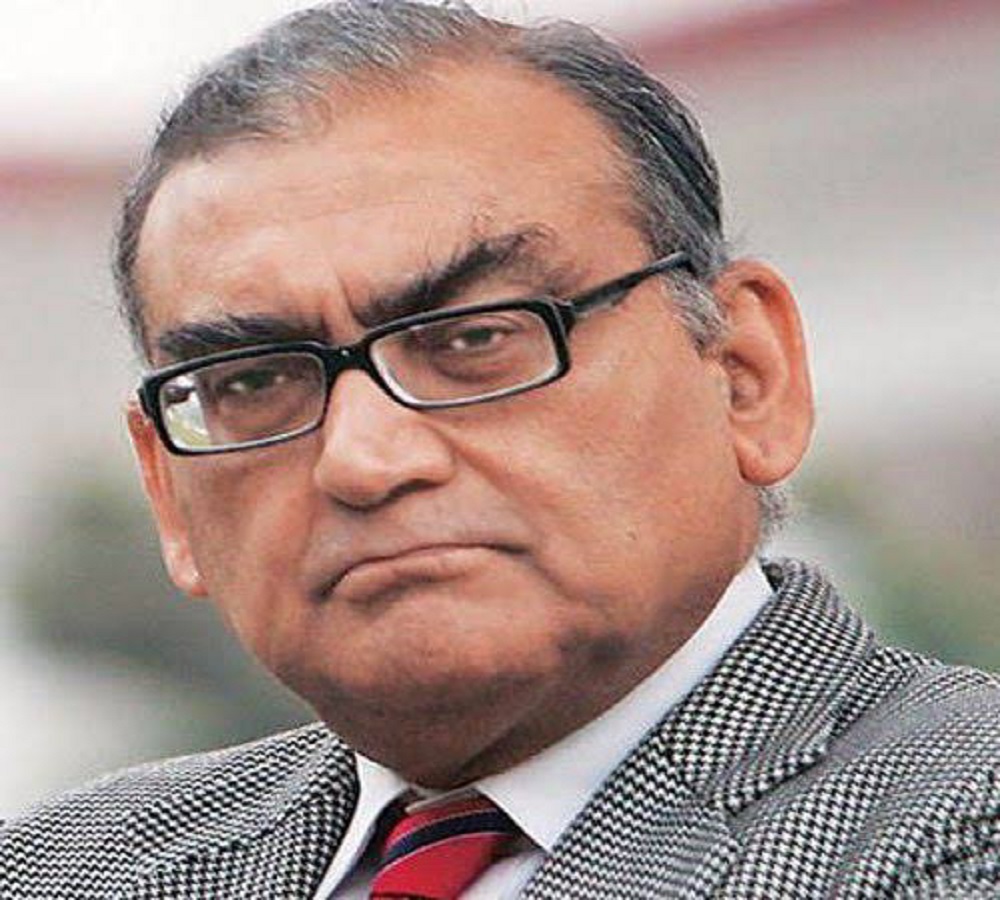In a passionate defense of Urdu’s rich heritage and its rightful place as a language of India’s heart, in an article shared on his Facebook wall, former Supreme Court Justice Markandey Katju delves into its origins, evolution, and cultural significance, describing it as a uniquely Indian language with a dual character—both aristocratic and rooted in the common man’s experience. Titled “What is Urdu,” the piece challenges the notion that Urdu is a foreign language, asserting its indigenous roots and its deep connection to the Indian populace.
Urging its revival and recognition as a unifying cultural force, Justice Katju explains that Urdu emerged from the superimposition of Persian vocabulary and features onto a Hindustani (Khariboli) foundation, making it a hybrid language, once called Rekhta. “Urdu is a language created by the combination of two languages, Persian and Hindustani,” he writes, emphasizing that its verbs, derived from Hindustani, classify it as a special kind of Hindustani rather than Persian. “The fact that it is a special kind of Hindustani shows that it is a desi or indigenous language,” Katju asserts, countering claims that Urdu is foreign.
Tracing the historical context, Katju notes that Hindustani, the foundation of Urdu, developed as the common language of urban markets in North India, facilitating trade across diverse regions. “A trader traveling from Bihar or Madhya Pradesh could easily sell his goods in a city in Uttar Pradesh or Rajasthan or Punjab because there was a common language, Hindustani,” he explains. Urdu, built on this base, incorporated Persian sophistication due to the latter’s status as the court language during the Mughal era, particularly from Emperor Akbar’s time.
Katju highlights the transformation during the decline of the Mughal Empire after 1707, when the later Mughals, reduced to nominal rulers, adopted Urdu as the court language. “Urdu is thus the language of aristocrats who had become pauperized, but who retained their dignity, pride and respect,” he writes, citing the example of poet Ghalib, who, despite financial struggles, maintained his aristocratic pride. Katju quotes Urdu poet Josh to encapsulate this dignity: “Hashr mein bhi khusrawana shaan se jaayenge hum / Aur agar purshish na hogi, to palat aayenge hum” (Even on judgment day I will go in style / And if not given respect, will turn back).
The article underscores Urdu’s dual nature: “It is both an aristocratic language as well as the commoner’s language.” While its content reflects the struggles and aspirations of the common man, its polished, sophisticated style draws from Persian influences, making it a powerful medium for expressing human emotions. Katju praises Urdu poetry’s elegance, stating, “In no language does the voice of the human heart emerge with such power and elegance (andaz-e-bayan) as it does in Urdu.”
However, Katju laments the damage inflicted on Urdu post-1947 Partition, when it was branded as a “foreign” or “Muslim” language in India. He criticizes the systematic replacement of commonly used Persian words with obscure Sanskrit ones, such as replacing zila (district) with janapad. “This policy of hatefully removing Persian words… resulted in almost genocide for Urdu in India,” he writes. Despite this, he remains optimistic, pointing to the enduring popularity of Urdu in mushairas, Hindi film songs, and the sale of Urdu poetry books at railway bookstalls as evidence of its vitality.
To revive Urdu, Katju suggests making it compulsory in schools for five years, alongside Sanskrit, to connect it to livelihoods and ensure its cultural preservation. He also advocates for publishing Urdu works in both Persian and Devanagari scripts to make them accessible to a wider audience. Quoting Urdu critic Shamshur Rahmaan Farooqui, who called Urdu a “dead and buried” language, Katju disagrees, asserting, “The language which speaks the voice of the heart can never be stamped out as long as people have hearts.”
Katju concludes by urging Urdu and Hindi writers to use simpler language to address contemporary issues like poverty and unemployment, making literature a tool for the masses. He celebrates Urdu poetry’s ability to capture historical transitions, citing Firaq’s couplet: “Har zarre par ek kaifiyat-e-neemshabi hai / Ai saaqi-e-dauran yeh gunahon ki ghadi hai,” which he interprets as a profound depiction of India’s ongoing transition from feudalism to modernity, marked by societal upheaval and clashing values.

